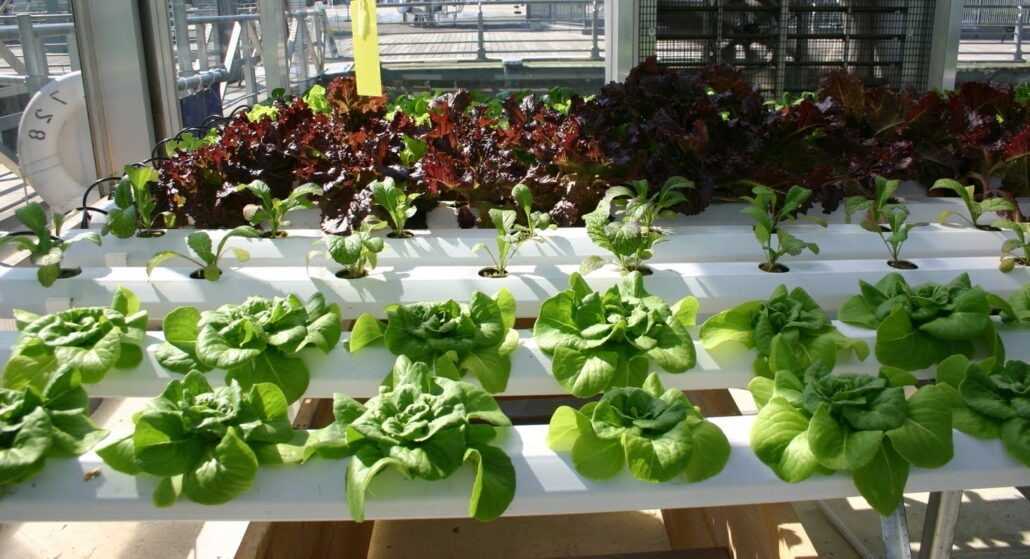Hydroponic Gardens | Learn How to Grow Plants
One of the following techniques is employed by medium-culture systems
Media selection for medium-culture systems
Recharging the nutrient solution
Nutritional quality of hydroponically grown produce
What is hydroponics?
The Greek words "hydro" (meaning water) and "pones" (meaning work) are the origin of the term "hydroponics." Soilless planting is what hydroponics is all about. Due to high temperatures, little natural precipitation, and a lack of fertile soil, growing food in a desert can be challenging. Regardless of the environment, the availability of soil, or the available space, hydroponics can be a reliable option for growing fruits, vegetables, and herbs.
Advantages of hydroponics
- Plants can be grown year-round almost anywhere.
- More control over the growing environment, resulting in higher crop yields and shorter growing times.
- There is no need to weed.
- Can save up to 90% of water.
- Crop rotation is not required.
- Plants can be vertically stacked and placed closely together.
- Reusing materials is possible.
- Hydroponics' drawbacks
- More expensive start-up expenses than soil-based growing methods.
- When diseases are prevalent, they can spread quickly.
- Requires some fundamental abilities and knowledge to keep up.
Growing crops hydroponically
Produce can be produced hydroponically in a house, an apartment, a greenhouse, or an office. Light, air, water, nutrition, heat, and space are the six things that are required. Both indoors and outdoors can be used for hydroponic cultivation. In either situation, plants require five to six hours of light each day, access to energy, and a flat, wind-free region. The ideal temperature varies on the type and variety of the plant.
Hydroponic growing systems
There are two types of hydroponic systems
medium-culture and water-culture. In water culture systems, the nutrient solution is the only media used to sustain the roots. In medium culture systems, the plant root structure is supported by a dense substrate, such sand. Either open or closed systems are possible. In an open system, the nutrient solution does not cycle back through the system after passing the roots. The excess nutrient solution is recovered, refilled, and recycled within a closed system. Water-culture systems employ one of the three techniques listed below: Plant roots are placed in a small-diameter PVC tube or trough, and fertilizer solution runs across the roots, creating a nutrient-dense film of water surrounding them. This approach is known as the nutrient film technique (NFT).
You can have open or closed NFT systems. Raft or floating system: Styrofoam sheets floating in an aerated nutrient solution sustain the plants. The roots are suspended in the solution and hang through tiny pores in the Styrofoam. Raft systems are closed, and it is necessary to regularly check on and modify the nutritional solution. The roots of the plants are hung in the air and placed in a supporting container. Instead of submerging the roots in the nutritional solution, the roots are misted with it. Open or closed aeroponic systems are available.
One of the following techniques is employed by medium-culture systems
Ebb-and-flow system
A grow bed is flooded with nutrient solution that is pumped from a reservoir into it. Gravity causes the nutrient solution to return to the reservoir. The nutritional solution is recycled in this case, making it a closed system.
Drip irrigation: Drip irrigation provides nutrient solution to plants that are supported in a solid media.
A variety of commercial uses, like the tower garden, which supports plants in a vertical PVC pipe with a porous medium, have been made possible by modifications to this concept. A drip emitter at the top of the pipe applies nutrient solution there. You can either recycle (close) or throw away nutrient solution (open).
Sub irrigation system
Within a porous medium, plants are cultivated. High capillary action is responsible for delivering nutrient solution to the roots.
Media selection for medium-culture systems
The hydroponic medium must give the plant nutrients, water, oxygen, and support. Its particle size, shape, and porosity dictate how much moisture it retains at a medium rate. Foam, gravel, perlite, rockwool, sand, Hydro ton (Fig. 1), coco coir, and pumice are common options for media. Each medium has benefits and drawbacks, and the selection will depend on factors including availability, price, quality, and the type of hydroponic system being used.
The most well-liked hydroponic medium is rockwool, a mineral fiber made from basaltic rock. It offers quick crop turnaround and low crop failure risk. Additionally, the open rockwool system reduces the spread of infections. A common media for hydroponic growing systems is hydro ton. It is reusable, constructed of expanded clay, and has a pH that is neutral.
Nutrient solutions
The plant receives nutrients when fertilizer salts are dissolved in water. Purchase of a commercial solution or creation of your own stock solution are the two ways to obtain nutritional solutions. The best formulation depends on a number of factors, including the plant species, growth stage, harvesting portion of the plant, growing season, and weather (if outdoors). Taking care of the hydroponic system
Recharging the nutrient solution
The fertilizer solution is applied to agricultural plants just once in an open system. In a closed system, the nutrient solution is used just once before being pH and nutrient-level-analyzed and properly-adjusted. In order to stop the spread of infections, it must also be sterilized before being put back into the plants. Heat, UV light, and ozone are often used sterilizing techniques.
Sterilizing hydroponic media
Hydroponic systems for medium-culture are vulnerable to pathogenic bacteria building up in the medium with each succeeding crop. It is advised to disinfect the system between each crop for the optimum results.
Sterilization
Steam sterilization is effective at 180 F for at least 30 minutes, and it can clean beds with a depth of up to 8 inches. When steam sterilization is not an option, chemical sterilization is utilized. The recommended concentration of bleach, which is frequently used, is 10,000 parts per million. The medium should be properly rinsed after the solution has been allowed to settle on it for 30 minutes. Other choices include beamed, formaldehyde (as a fungicide), chloropicrin (as an insecticide), Vapam (a water-based fumigant), and (granular soil fumigant). Many of these compounds are harmful to people, so anyone applying them should carefully read the label for usage and safety instructions.
Pest and disease management
The most efficient and environmentally friendly method for both industrial and domestic hydroponic environments is integrated pest control (IPM). IPM is a multi-faceted approach to pest management that depends on user tolerance for pests and the scope of the outbreak rather than on a single method of pest control. The grower must monitor and identify pests, implement prevention and control measures for both effectiveness and risk, and define action thresholds based on economic threat. The grower must employ the IPM strategy that is most suitable for the current circumstance.
Nutritional quality of hydroponically grown produce
Regarding the difference in nutritional value between produce grown hydroponically and soil-grown, there is no definitive research available. It is believed that someday, the nutritional value of crops grown hydroponically may surpass that of those cultivated in soil because hydroponics provides for complete control over the conditions of growth. Hydroponically grown strawberries and raspberries were contrasted with their soil-grown counterparts at the University of Nevada, Reno.
The comparison of hydroponically grown strawberries to soil-grown strawberries revealed significantly higher levels of vitamin C, vitamin E, and total polyphenolic compounds, but much lower levels of fructose and glucose. When compared to raspberries grown in soil, hydroponic raspberries have much lower levels of fructose and sucrose.



![Top Reasons To Have SEO Plan For Every Dubai Business [2025 Update]](/thumnails/blog/2024/11/1732278589.jpg)















